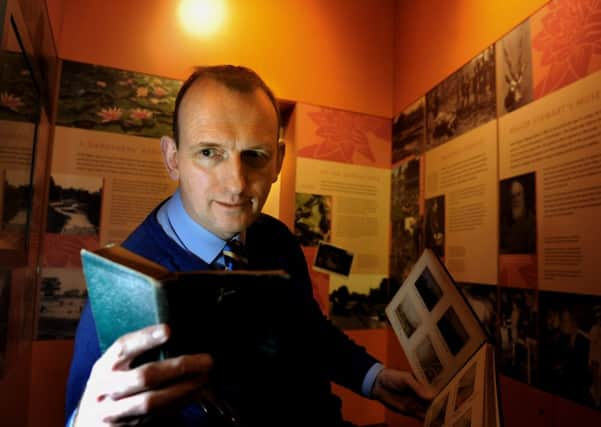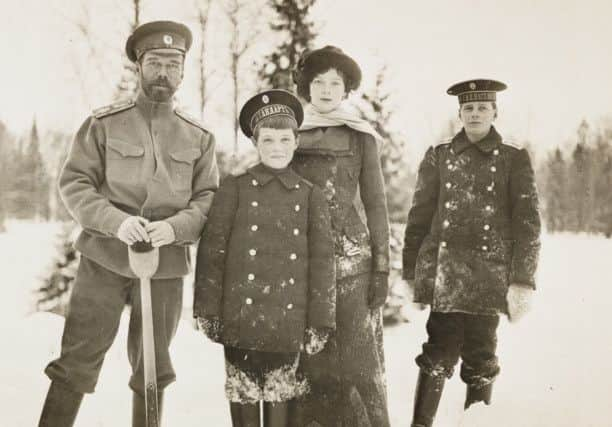Rare insight into Russian royalty


The murder of the Russian Imperial family helped shape early 20th century history, but the story of a Yorkshireman who tutored the young offspring of Tsar Nicholas II’s sister, and captured a unique record of a lost world in photos, is barely known.
Until staff at Burnby Hall in Pocklington started doing some research last year, little was known about Herbert Stewart, the younger brother of the East Yorkshire property’s owner Percy Stewart.
Advertisement
Hide AdAdvertisement
Hide AdTheir collection included a wallet containing Russian roubles, a diary providing brief details of the early days of the Russian Revolution and a calling card announcing “Herbert Stewart, English Tutor to His Imperial Highness, Grand Duke Alexander Michailovitch”.


But research revealed the existence of a collection of photographs taken by Mr Stewart, still in their original Harrods box, at the National Media Museum in Bradford. In all there were 22 albums containing hundreds of beautifully-shot photographs of the young charges of Mr Stewart, who spent a decade in Russia until the cataclysmic events of 1917 and 1918.
Mr Stewart captured the boys dressed in naval uniforms, horse-riding, fishing and swimming, and in winter sledging on their families’ vast estates. On a trip to England with their mother Grand Duchess Xenia, Mr Stewart recorded the children in white shorts, tops and sunhats paddling on the beach at Bognor Regis.
In Russia they were sometimes joined by Tsar Nicholas II, his daughters and their only son, the Tsarevich Alexei, heir apparent to the throne of the Russian Empire, who were to be murdered by the Bolsheviks in July 1918.
Advertisement
Hide AdAdvertisement
Hide Ad“We came across the existence of Herbert Stewart’s photo albums quite by chance,” said assistant estate manager Peter Rogers. Towards the end of 2013, his diary was loaned to the Treasure House at Beverley and it was background research which revealed the existence of these albums.
At the time it was fashionable for the highest-ranking Russian families to employ English nannies and tutors. The Tsar himself employed a Yorkshireman called Sidney Gibbes. Mr Stewart met the Grand Duke in Biarritz when he was a young man and made a good impression.
“The Grand Duke told him that when he had sons he would invite him to be their tutor,” said Mr Rogers, who has published a new booklet called Mr Stewart and the Romanovs. He was as good as his word and Mr Stewart went to work for him in July 1908.
“Living as part of their household, Stewart was in a unique position to photograph one of the highest-ranking aristocratic families in pre-revolutionary Russia,” Mr Rogers added. “It’s hard not to look at them and reflect that in a few short years it would all be gone.”
Advertisement
Hide AdAdvertisement
Hide AdMr Stewart’s glittering life in Russia came to an end when the Revolution took hold. He recorded in his diary on March 16, 1917, that there was “heavy depression” at 106, Moika, the family’s palatial home in Petrograd. The family left for the Crimea the following month and Stewart left Russia at the end of the year. In a letter he wrote to one of the boys, Dmitri, hoping that there would be no more “unpleasantness” and that the Allies would “go into Russia, quell the Bolsheviks and help the Russians form a stable Government”.
But it was not to be. The Russian Imperial Romanov family, including their four daughters and their son and all those who chose to accompany them into exile were shot in Yekaterinburg on July 17, 1918.
Grand Duchess Xenia, along with the Grand Duke and the children, escaped and settled as exiles in England, France and the US. Dmitri later became a Royal Naval officer and Stewart lived the remainder of his life in the Basse-Pyrenees. He died in 1960, the same year as Grand Duchess Xenia.